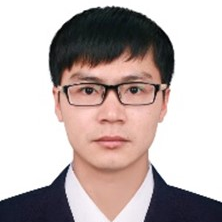Photoelectric Intelligent Perception: From Materials and Imaging Mechanisms to Applications
A special issue of Electronics (ISSN 2079-9292). This special issue belongs to the section "Power Electronics".
Deadline for manuscript submissions: closed (15 November 2023) | Viewed by 3813
Special Issue Editors
Interests: bio-inspired vision; lidar; ghost imaging; artificial compound eyes
Interests: optical coherence tomography; intraoperative imaging; microsurgery guidance and evaluation; smart surgical tools; deep learning
Interests: ultrasonic/photoacoustic/photothermal imaging; ultrasonic transducers; photothermal transducers; biomimetic acoustic sensors; micromachining; metamaterials; optical camouflage; stealth
Interests: fluorescent materials; semiconductor; display; detector
Special Issues, Collections and Topics in MDPI journals
Interests: bionic imaging; liquid lens; soft actuators; compound eye
Special Issues, Collections and Topics in MDPI journals
Special Issue Information
Dear Colleagues,
With the rapid development of optical imaging, many kinds of intelligent perception techniques including advanced materials, 2D/3D imaging mechanisms, and related algorithms have been studied. Some techniques have been widely used in robotic vision, UAV, intelligent monitoring, biomedical engineering. However, there are still some drawbacks to be overcome before these will be suitable for practical use. The goal of this Special Issue is to focus on novel theory and techniques for imaging mechanisms, optical materials, and algorithms which can be used to improve the performance of photoelectric intelligent perception.
The field includes the following:
- Novel imaging mechanisms in 2D and 3D, such as ghost imaging , Lidar, bio-inspired vision, etc.;
- Improvements in optical materials and elements, including near-infrared detectors, liquid lenses, etc.;
- Biomedical imaging and applications, such as optical coherence tomography and image-guided interventions for microsurgery;
- Ultrasonic/photoacoustic/photothermal imaging, ultrasonic transducers, photothermal transducers, biomimetic acoustic sensors, and micromachining;
- Optical camouflage, stealth, and metamaterials;
- Intelligent learning approaches, including neural networks (NNs), especially the recently proposed light-weight NNs (Li-NNs) and neural dynamic learning networks.
Dr. Jie Cao
Dr. Yong Huang
Dr. Jinying Zhang
Dr. Bingkun Chen
Dr. Yang Cheng
Guest Editors
Manuscript Submission Information
Manuscripts should be submitted online at www.mdpi.com by registering and logging in to this website. Once you are registered, click here to go to the submission form. Manuscripts can be submitted until the deadline. All submissions that pass pre-check are peer-reviewed. Accepted papers will be published continuously in the journal (as soon as accepted) and will be listed together on the special issue website. Research articles, review articles as well as short communications are invited. For planned papers, a title and short abstract (about 100 words) can be sent to the Editorial Office for announcement on this website.
Submitted manuscripts should not have been published previously, nor be under consideration for publication elsewhere (except conference proceedings papers). All manuscripts are thoroughly refereed through a single-blind peer-review process. A guide for authors and other relevant information for submission of manuscripts is available on the Instructions for Authors page. Electronics is an international peer-reviewed open access semimonthly journal published by MDPI.
Please visit the Instructions for Authors page before submitting a manuscript. The Article Processing Charge (APC) for publication in this open access journal is 2400 CHF (Swiss Francs). Submitted papers should be well formatted and use good English. Authors may use MDPI's English editing service prior to publication or during author revisions.
Keywords
- novel imaging
- biomimetic
- OCT
- NIR
- detecting material
- ultrasonic
- photoacoustic
- deep learning
- target tracking
- recognition









